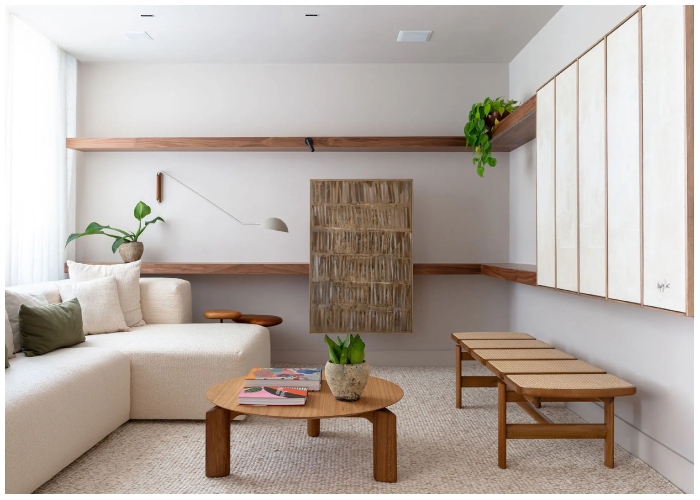In today’s nonstop digital age, stillness has become a rare luxury. But in 2025, a growing number of individuals are intentionally seeking out quieter lifestyles—and discovering that tranquility is more than just peaceful, it’s powerful. Whether it’s using soundproof materials, switching to ultra-quiet gadgets, or cutting down on pings and pop-ups, people are embracing what’s now known as “quiet living.” The goal? Not just to avoid noise—but to reclaim focus, reduce tension, and function better overall.
What used to be dismissed as mere background noise is now being identified as a major source of stress and distraction. Turning down the volume—literally and figuratively—has become one of the smartest life upgrades you can make.
Why Reducing Noise Is a Game-Changer
Ongoing exposure to sound—whether it’s street traffic, buzzing electronics, chatty coworkers, or autoplay videos—can quietly drain your mental resources. Even moderate sound levels can interfere with attention, raise anxiety levels, and throw off your body’s natural rhythms.
Recent findings reveal that long-term sound exposure is linked to poor sleep, rising blood pressure, and elevated stress chemicals like cortisol. With more people working from home or in hybrid settings, the need for calm, quiet surroundings has become urgent.
What Quiet Living Really Means
This lifestyle trend isn’t about silence for silence’s sake—it’s about reshaping your environment so your mind and nervous system can finally take a breather. Quiet living means managing your space and habits to reduce unnecessary auditory input.

Instead of complete silence, the aim is a balanced sound atmosphere—one that soothes rather than overwhelms.
Key Elements of a Quiet-Focused Space
- Sound-Reducing Materials: Items like thick rugs, wall hangings, and acoustic curtains absorb echoes and minimize bounce-back noise.
- Whisper-Tech Gadgets: Newer models of home tools—like fans, keyboards, or humidifiers—now operate almost silently.
- Intentional Layouts: Arranging rooms with soft textures and fewer hard surfaces helps reduce loudness naturally.
- App Management: Software like Focus Mode or minimalist phones help cut down alert fatigue by batching or silencing non-urgent notifications.
- Calm Corners: Dedicated rooms or nooks where devices stay off and quiet time is encouraged.
Why It’s Gaining Ground in 2025
Several factors are fueling this shift toward serenity:
- Exhaustion from overstimulation: Endless meetings, background playlists, and screen time have pushed people to their cognitive limit.
- Creative fatigue: Artists and thinkers are noticing that their best ideas come during quiet spells.
- Health-conscious tech: Brands are designing quieter household items to meet the growing demand for low-distraction living.
- Social media fatigue: Consumers are turning away from loud, overstimulating content in favor of slow, calming rituals.
Benefits of a Quiet-Focused Lifestyle
- Sharper attention and quicker task performance
- Lower emotional reactivity and anxiety
- Better relationships through present, undistracted interactions
- Enhanced deep sleep and morning alertness
- Greater creativity and mental clarity
How to Begin a Quieter Routine
Starting doesn’t require a complete overhaul. Try these beginner tips:
- Bring in softness: Use cushions, wall tapestries, or fabric furniture to reduce echo.
- Set noise-free hours: Dedicate two hours a day with no music, no videos, and no calls.
- Experiment with ambient tones: Replace loud tunes with gentle brown noise or soft natural sounds.
- Change your notifications: Swap out loud alerts for gentle vibrations or remove them altogether.
- Unplug during solo moments: Whether you’re having tea, walking, or journaling—do it without background audio.
Quiet Lifestyle Microtrends to Watch
- Silent Starts: No screens or sound for the first hour of the day
- Soft Offices: Workspaces are trading plastic and metal for sound-soaking fabrics
- Screen-Free Strolls: More people are walking without earbuds or content
- Custom Sound Environments: Apps now let you design peaceful audio backdrops using ocean waves or low hums
Silence in today’s chaotic world isn’t a retreat—it’s a reset. Choosing quiet is no longer passive—it’s powerful. As we head deeper into 2025, embracing silence isn’t about removing noise altogether, but about taking control of how much sound we allow into our lives.
True focus begins when the noise fades. And this year, quiet may just be your most valuable tool for clearer thinking, deeper peace, and a healthier mind.